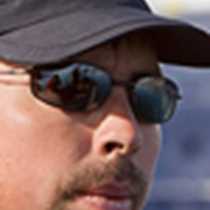Prins Karls Forland and St.Johns Fjord
We had been cruising along the west coast of Svalbard all night to get to this area, and our first planned landing was Poolepynten. The name means “Poole point,” after the famous Jonas Poole – a British whaler who was up here in the 17th century. Poolepynten is one of the best places to find walrus on the west coast, and we did see one in the water before we arrived at the point. But sadly there were none at the traditional haul-out site.
The predicted wind had picked up, so we were definitely in for a wet landing with the Zodiacs. With all the hikers on land, we had a great hike despite some Arctic wind. Poolepynten offers a flat and easy beach to walk on, but since it is so flat it is covered in driftwood. Together with the driftwood the Gulf Stream also bring plastic garbage. There is a clean-up operation going on around Svalbard organized by the governor’s office, and we all helped out by cleaning this part of a beautiful landscape. We could see many whalebones on the beach, most likely from the 17th century whaling period. Isostatic rebound (where the land rises as icecaps and glaciers melt), now leaves these whalebones high above the shore.
After a great walk on Poolepynten, we sailed into St. Johns fiord. This fiord is protected from the wind, and therefore a great start point for a Zodiac cruise for those worn out by this morning’s walk. Some therefore took to the Zodiacs, and explored along the face of a tidal glacier. These glaciers have been retreating in recent years, in common with most of the glaciers on Svalbard. On our afternoon hike meanwhile, we were so lucky to get close to several reindeer. It was great to see a female with calf, grazing next to a large male. The Svalbard reindeer is special due to its stocky shape – round with short stubby legs. This round shape reduces the loss of heat from the body, helped by dense, insulating fur. They do not need long legs, as there is no real threat to the reindeer except from an occasional polar bear. It is also amazing to learn that reindeers can lay down up to 3 inches of fat on their body as an extra food storage to tide them over the long winter.
The hike led us high up into the mountains, where we had dry tundra with a great cover of Mountain
Avens – beautiful white flowers that can cover a hillside. In Norwegian, this flower is called “Reindeer Rose” – a well-deserved name, for we watched the male feasting on the flower heads.
On the return to the ship, we passed an old trapper’s hut made out of driftwood logs. This is a good example of how a satellite station for a trapper might look, and how small they were made: so much easier to keep them warm!




